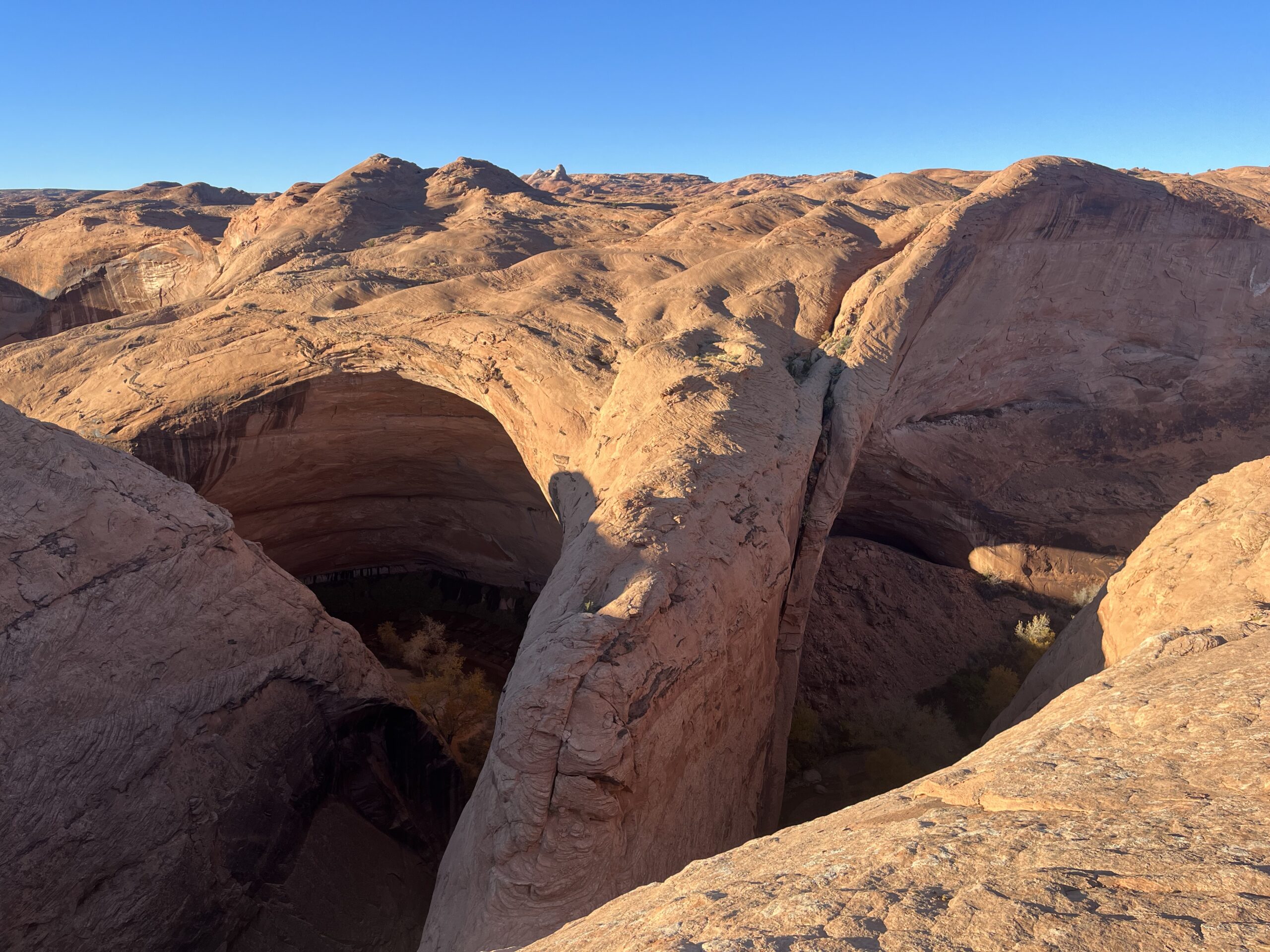Top Desert Hiking Trails Beyond the Grand Canyon
While the Grand Canyon is often the first place that comes to mind when people think of desert hiking, the American Southwest is rich with other incredible trails that showcase diverse landscapes, stunning vistas, and unique ecosystems. For those looking to expand their desert hiking experiences beyond the iconic Grand Canyon, here are some top trails to explore:
1. Cathedral Rock, Desert Hiking Trail in Sedona, Arizona
Length: 1.2 miles round trip
Difficulty: Moderate to Strenuous
Highlights: The Cathedral Rock Trail is short but steep, offering breathtaking views of Sedona’s iconic red rock formations. The challenging ascent rewards hikers with panoramic vistas of the surrounding desert and sandstone buttes. Sunset hikes here are especially spectacular, as the rocks glow with a rich, warm hue.
2. The Wave, Vermilion Cliffs National Monument, Arizona/Utah
Length: 6.4 miles round trip
Difficulty: Moderate
Highlights: Known for its mesmerizing sandstone formations that create an illusion of waves, this hike is a bucket-list destination for many outdoor enthusiasts. Due to its fragile environment, permits are required, making it essential to plan ahead. The Wave’s unique swirling patterns and colors make it one of the most photogenic trails in the desert.
3. Angels Landing, Desert Hiking Trail in Zion National Park
Length: 5.4 miles round trip
Difficulty: Strenuous
Highlights: Angels Landing is one of the most famous and thrilling hikes in the Southwest. With steep switchbacks and narrow paths that hug the cliffside, this trail is not for the faint of heart. The reward? A panoramic view of Zion Canyon that is second to none. This hike requires a permit due to its popularity and safety considerations.
4. Devils Garden Desert Hiking Trail, Arches National Park, Utah
Length: 7.9 miles round trip (full loop)
Difficulty: Moderate to Strenuous
Highlights: The Devils Garden Trail takes hikers through some of the most captivating landscapes in Arches National Park. Along the route, you’ll pass eight stunning natural arches, including the iconic Landscape Arch. The trail features varied terrain, including sandy paths, rocky scrambles, and narrow ledges.
5. Lost Palms Oasis Trail, Joshua Tree National Park, California
Length: 7.5 miles round trip
Difficulty: Moderate
Highlights: This trail leads hikers to a hidden grove of native California fan palms nestled within a rugged canyon. The combination of surreal rock formations and the sight of the palms creates a striking contrast against the desert landscape. This hike is particularly rewarding in spring when wildflowers bloom and temperatures are milder.
6. Buckskin Gulch, Paria Canyon-Vermilion Cliffs Wilderness, Utah/Arizona
Length: Varies; up to 21 miles one way
Difficulty: Strenuous
Highlights: Buckskin Gulch is one of the longest and deepest slot canyons in the world. Hiking here is an unforgettable experience, with towering walls that narrow to just a few feet wide in some places. Be prepared for sections of water, scrambling, and the possibility of flash floods—proper preparation is vital for safety.
7. South Rim Trail, Big Bend National Park, Texas
Length: 12-14.5 miles round trip
Difficulty: Strenuous
Highlights: The South Rim Trail in Big Bend National Park offers sweeping views of the Chihuahuan Desert and the Sierra del Carmen mountains. This hike is known for its diverse landscape, transitioning from desert lowlands to high-elevation forests, and provides a glimpse into the varied plant and animal life of the region.
8. Picacho Peak via Hunter Trail, Picacho Peak State Park, Arizona
Length: 2.7 miles round trip
Difficulty: Strenuous
Highlights: This hike is perfect for those looking for a challenge with a unique twist. Hunter Trail takes you up Picacho Peak using steep switchbacks and even steel cables to assist with the climb. The panoramic views at the top encompass miles of Sonoran Desert, making the effort well worth it.
9. Calico Tanks Trail, Red Rock Canyon National Conservation Area, Nevada
Length: 2.5 miles round trip
Difficulty: Moderate
Highlights: This hike showcases the vibrant red rock formations that the conservation area is famous for, leading to a hidden water tank with spectacular views of Las Vegas in the distance. The trail winds through colorful sandstone, boulders, and unique rock features, offering a blend of natural beauty and adventure.
Tips for Desert Hiking Beyond the Grand Canyon
- Permits and Regulations: Many of these trails, such as The Wave and Angels Landing, require permits to manage crowding and protect the environment. Be sure to research and secure necessary permits well in advance.
- Hydration: Always bring ample water, as some trails do not have reliable water sources.
- Start Early: To avoid the intense midday heat, start your hikes early in the morning.
- Respect Wildlife: Be aware of local wildlife and maintain a safe distance to ensure both your safety and theirs.
- Check Weather Conditions: Always check the forecast and be aware of potential hazards, such as flash floods in slot canyons.
Conclusion
Exploring the desert trails beyond the Grand Canyon opens up a world of adventure that showcases the diverse beauty and challenges of the American Southwest. From breathtaking rock formations to serene desert oases, these trails offer something for every type of hiker. So lace up your boots, pack smart, and set out to experience some of the most awe-inspiring desert landscapes the region has to offer. Book a guided hike with The Desert Hiking Company!
Read about our favorite Desert Hiking Trails in Grand Canyon here!






